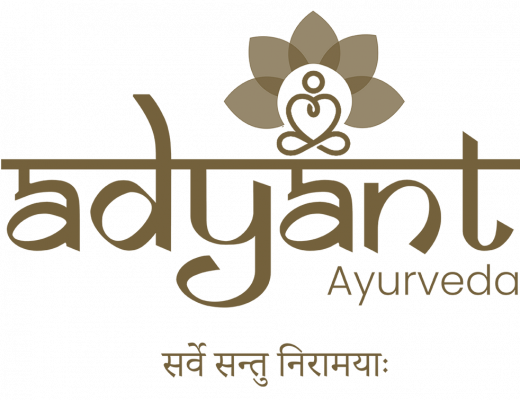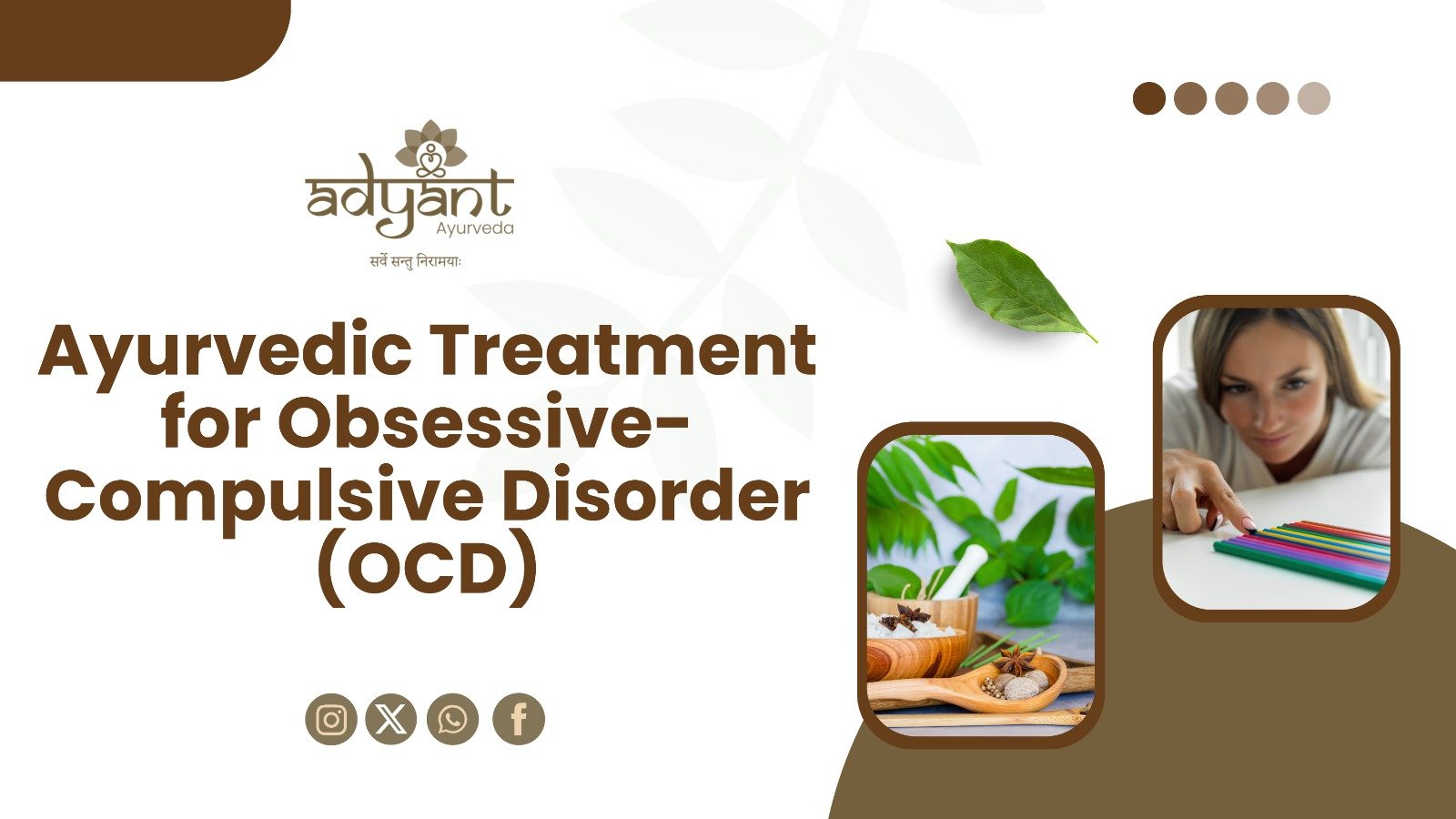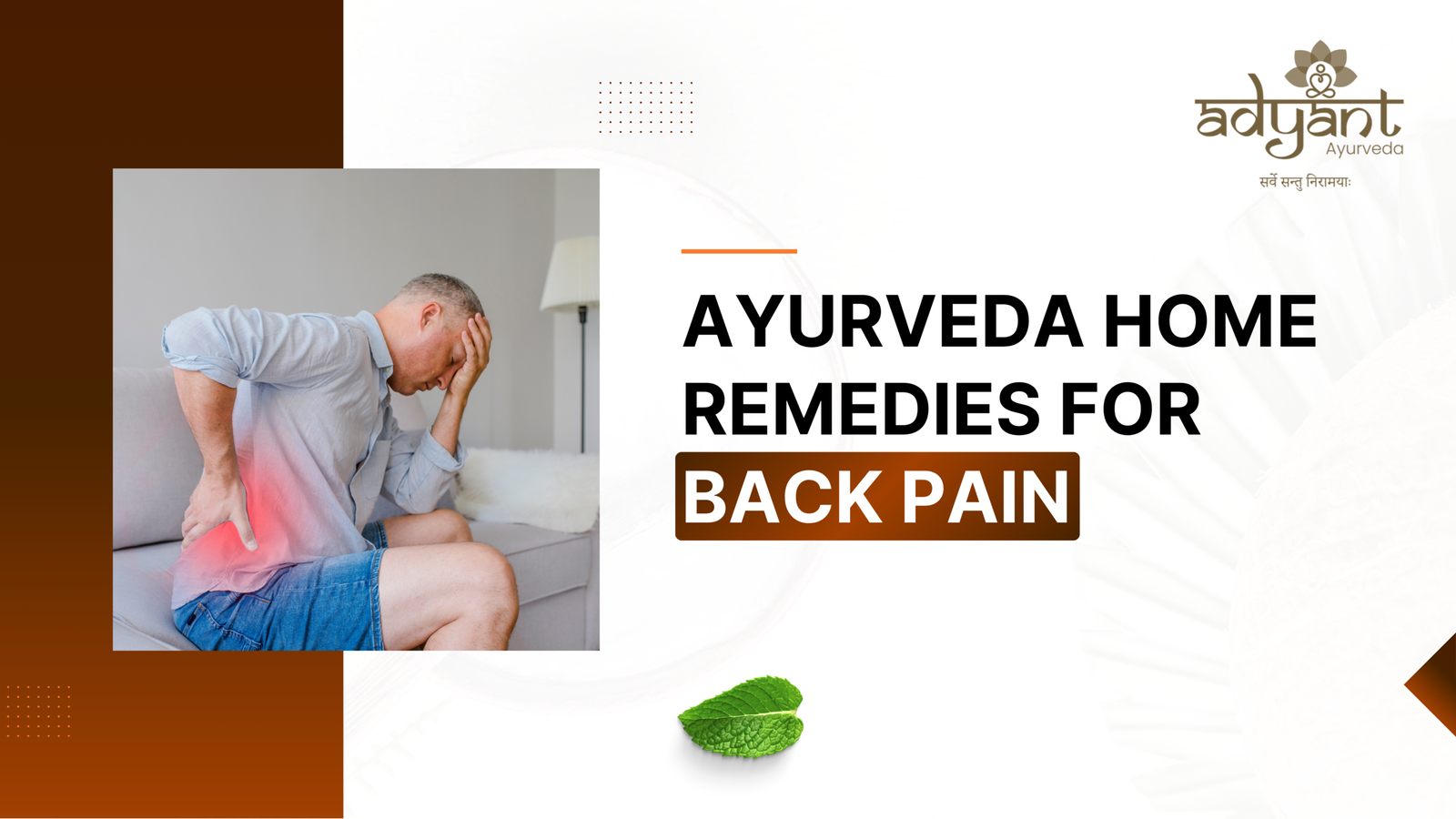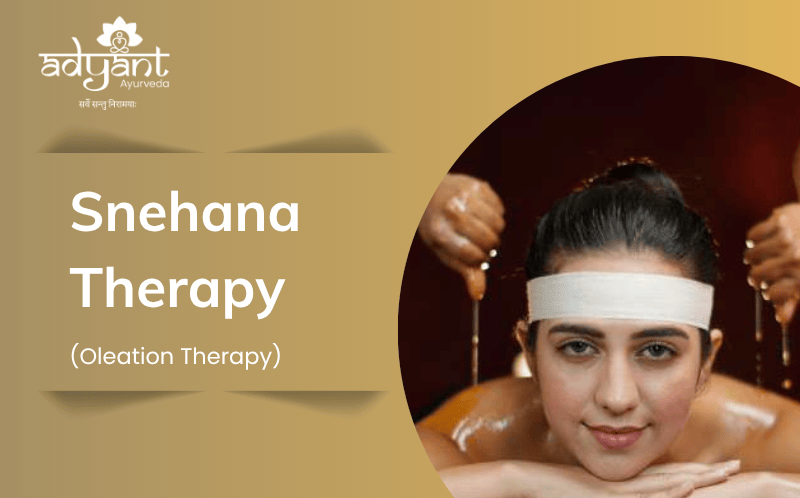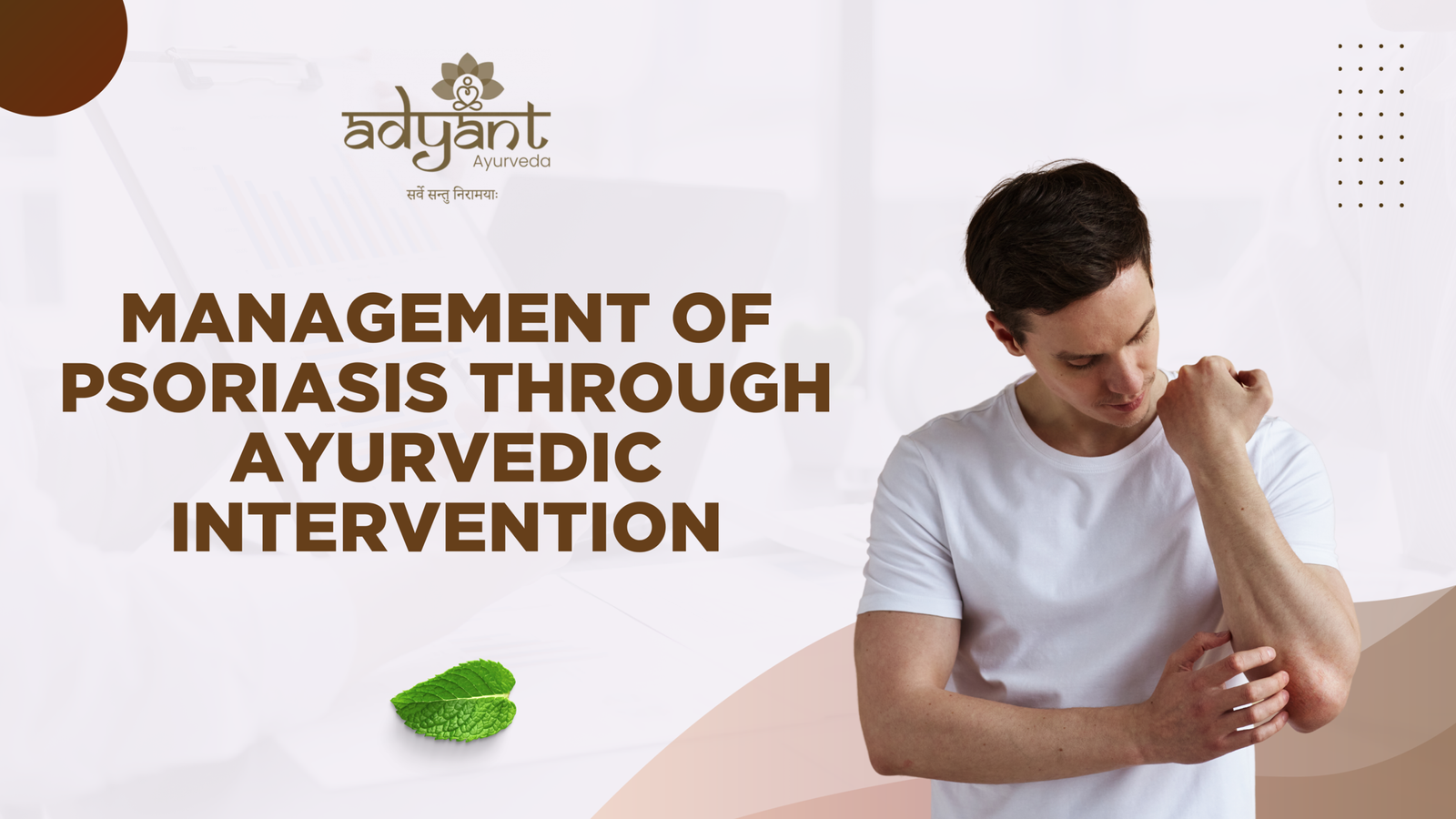Table of Contents
ToggleObsessive-Compulsive Disorder (OCD) is a chronic mental health condition characterized by recurring, intrusive thoughts (obsessions) and repetitive behaviors or rituals (compulsions). These actions, though often irrational, are performed in an attempt to alleviate anxiety. The disorder interferes with day-to-day life, social interaction, and occupational functioning, causing significant emotional distress.
Medically reviewed by Dr. Shree Lakshmi, BAMS — Ayurvedic Psychiatric Specialist at Adyant Ayurveda, Bangalore
24+ years of Panchakarma & Mental Health expertise. Treated 150 + patients with OCD
In Ayurveda, OCD shares similarities with Unmada and Atattvabhinivesha, both recognized as severe mental disturbances that result from imbalances in doshas, especially Vata, and derangement of mental faculties such as Manas, Buddhi, Smriti, and Chetana.
Sharīra-manasoḥ duḥkham adharmaś ca tasya hetavaḥ,
Prajñāparādhas trividho doṣa ity anukīrtitāḥ.
Meaning:
Mental and physical suffering arise from sinful acts caused by Prajnaparadha (intellectual blasphemy), and the imbalance of the three doshas
Ayurvedic management of OCD is ideally structured around the triad of:
- Yuktivyapashraya Chikitsa (rational and medicinal therapies)
- Satvavajaya Chikitsa (mental discipline and emotional control)
- Daivavyapashraya Chikitsa (spiritual therapies)
Understanding OCD from an Ayurvedic Perspective
In classical Ayurvedic texts, OCD-like symptoms are described under Unmada and Atattvabhinivesha. These are Tridoshaja Manasika Vyadhis, with predominance of Prana Vata, Tarpaka Kapha, and Sadhaka Pitta.
These imbalances cause dysfunction in cognition and behavior. Vata drives uncontrolled thought patterns, Pitta aggravates irritability and frustration, and Kapha induces mental dullness and repetitive behaviors.
Key Ayurvedic Pathological Concepts:
- Vibhrama in Manas and Buddhi (distortion in thinking and reasoning)
- Obstruction of Manovaha Srotas (mental channels)
- Kapha’s Avarana (covering) over Vata, leading to rigidity and compulsion
Ayurvedic Clinical Diagnosis Parameters
In addition to Prakriti and Tridosha evaluation, the following parameters are assessed:
- Dushya: Rasa Dhatu and Tridosha
- Desha: Jangala (moderate strength region)
- Bala: Rogabala (high), Rogibala (moderate)
- Kala: Shishira Ritu (cold seasons may aggravate symptoms)
- Satva: Madhyama (average mental strength)
- Ahara & Jaranashakti: Poor appetite, moderate digestion
- Vaya: Often manifests in middle age
Treatment personalization also considers doshic dominance:
- Vata OCD: responds to Shirodhara, Basti
- Pitta OCD: benefits from Virechana, Sheetali pranayama
- Kapha OCD: managed with Vamana, stimulating herbs
Common Symptoms of OCD
“Early signs of OCD, such as persistent doubt, ritualistic behaviors, or intrusive fears, when addressed early, respond well to integrative Ayurvedic protocols.”
Obsessions:
- Persistent intrusive thoughts
- Fear of contamination
- Violent or sexual imagery
- Need for symmetry or exactness
- Doubts about safety or harm
Compulsions:
- Repetitive cleaning or handwashing
- Checking and rechecking locks, appliances
- Counting or ordering objects
- Seeking reassurance
- Repeating prayers, phrases, or actions
Long-Term Complications:
- Skin lesions from over-washing
- Social isolation and relationship strain
- Insomnia, anxiety, and depression
Diagnosis & Clinical Assessments
Modern Tools:
- Neurochemical markers: Low serotonin, high dopamine in OCD
- Brain imaging: CT/MRI/PET scans to evaluate cortical-basal ganglia circuits
- Psychological rating scales:
- Y-BOCS (Yale-Brown Obsessive Compulsive Scale)
- HAM-A (Anxiety)
- HAM-D (Depression)
Ayurvedic Treatment Protocol for OCD
Core Therapeutic Objectives:
- Restore Tridoshic balance
- Cleanse Manovaha Srotas
- Strengthen Dhee, Dhriti, Smriti
- Enhance Sattva Guna through herbal and behavioral interventions
1. Internal Medicines (Shamana Chikitsa)
- Drakshadi Kashayam – Calms the mind, improves digestion
- Chiruvilwadi Kashayam – Pacifies Vata, clears abdominal gas
- Manasmitra Vati – Restores sleep, reduces fear, and overthinking
- Ashwagandha + Shankhapushpi + Kushta – Relaxes mind and nerves
- Saraswatarishta – Improves intellect and memory
- Kalyanaka Ghrita – Medhya Rasayana for emotional stability
- Tagara Tablets – Addresses insomnia and nervousness
- Kamentose Tabs – Used for mood balancing
- Yashtimadhu Churna – Used with Ashwagandha for neuro-calming effect
2. Panchakarma Therapies (Shodhana Chikitsa)
- Snehapana – Oleation with Mahat Panchagavya Ghrita or Kalyanaka Ghrita
- Vamana – For Kapha-predominant OCD
- Virechana – Pitta-associated anger, irritability
- Basti (Yogavasti) – Regulates Vata in chronic, deep-seated OCD
- Nasya – Ksheerabala or Anu Taila for calming Prana Vata
Panchakarma Enhancements:
- Samsarjana Krama – Gradual post-detox dietary protocol
- Tala Dhyana – Application of medicated powders (e.g., Kachuradi) to the scalp
- Dhoopana Karma – Herbal fumigation (e.g. Haridra, Vacha, Jatamansi)
3. External Therapies
- Shirodhara – Buttermilk/Takradhara for Vata-Pitta calming
- Shirolepam – Brahmi, Jatamansi-based pastes for the crown
- Abhyanga – Dhanwantaram/Ksheerabala Taila full-body massage
- Dhoopanam – Herbal smoke to cleanse and soothe the mind channels
Satvavajaya Chikitsa (Mind Discipline Therapy)
As per Charaka, “Ahitebhyo arthebhyo manonigraha”—withdrawing mind from unwholesome stimuli—is central. This includes:
Ahitebhyo arthebhyo manonigrahaḥ.
Meaning:
Withdrawing the mind from unwholesome objects is the definition of Satvavajaya (mental control)
- Emotional regulation and counseling
- Self-control and reframing negative beliefs
- Mindful visualization and guided meditations
- Exposure response techniques for desensitization
- Use of mantra and sound therapy (Omkar, Gayatri)
Daivavyapashraya Chikitsa (Spiritual Therapies)
- Daily recitation of the Gayatri Mantra and the Omkar
- Observing sacred rituals for purification
- Faith practices and prayers to uplift Satva
- Satsang, listening to scriptures, and devotional music
Yogic Support: Pranayama & Asanas
Recommended Pranayama:
- Anulom-Vilom – Balances Ida and Pingala
- Bhramari – Calms the parasympathetic system
- Sheetali – Soothes inner fire (Pitta)
- Kapalbhati – Improves alertness
- Chandranuloma – Cooling and Vata-Pitta balancing
Asanas:
- Vajrasana, Shavasana, Padmasana, and gentle dynamic stretches to anchor awareness
Diet and Lifestyle (Ahara & Vihara)
Favor:
- Fruits: Grapes, Amla, Pomegranate
- Vegetables: Pumpkin, pointed gourd
- Milk, ghee, warm cooked food
- Medhya herbs in food: Brahmi, Vacha, Shankhapushpi
Avoid:
- Fried, fermented, spicy, refrigerated items
- Late-night meals and digital overstimulation
- Irregular sleep and erratic lifestyle
Satmya (habitual adaptation) was considered to align diet and therapy with long-standing individual patterns.
Post-Treatment Guidance
Medhyaṃ smṛtipradaṃ vṛṣyaṃ balavarṇakaraṃ śubham,
Pramehāśvāsa-kāsaghnaṃ medhyaṃ vācaṃ pravartakam.
Meaning:
Medhya Rasayanas promote memory, intellect, speech, immunity, and strength. They are beneficial in disorders like diabetes, asthma, and also support cognitive function.
- Continue Rasayanas like Saraswatarishta, Brahmi Ghrita
- Embrace daily meditation, chanting, and journaling
- Maintain fixed sleep/wake cycles and dinacharya
- Avoid exposure to OCD triggers during recovery
Psychological Outcome Monitoring
Case Insight:
A 28-year-old woman with severe compulsive handwashing and social withdrawal received a 90-day Ayurvedic protocol combining Vamana, Shirodhara, Manasmitra Vati, and Pranayama. Her Y-BOCS reduced from 27 to 5, with complete social reintegration and improved sleep.
Safety and Scientific Considerations
- Avoid Shodhana in cases with Alpa Satva or acute psychosis
- Gradual weaning if on psychiatric medication; physician collaboration advised
- Emerging research supports Ayurveda’s neuroprotective and anxiolytic effects; larger trials are needed
Integrative Healing Approach
Ayurveda complements modern psychiatry when used alongside:
- CBT (Cognitive Behavioral Therapy)
- ERP (Exposure and Response Prevention)
- Mindfulness-based therapies
- Regular follow-up with Ayurvedic and psychiatric professionals
You can also read: Ayurvedic treatment for stress and Anxiety
Conclusion
Balaṃ buddhiḥ smṛtiḥ tejaḥ sattvaṃ ojaḥ dhṛtiḥ kṣamā,
Ete dharmā manuṣyāṇāṃ sāyujyaṃ prāpnuvanti ca.
Meaning:
Strength, intelligence, memory, mental clarity, immunity, and patience — these qualities help a person attain health and spiritual well-being.
Ayurveda offers a compassionate, personalized, and multidimensional approach to healing Obsessive-Compulsive Disorder. Through doshic balancing, mind purification, and strengthening inner resilience, individuals can overcome obsessive behaviors and restore harmony in life.
With early intervention, expert guidance, and consistent follow-through, the path to freedom from OCD is both achievable and sustainable.
References
Use these to support integrative or Ayurvedic treatment validity for OCD and anxiety:
PubMed Study on Manasmitra Vati (Ayurvedic Formulation)
https://pubmed.ncbi.nlm.nih.gov/21584172/
Shows anxiolytic and cognitive-enhancing effects of Manasmitra Vati.Ayurvedic Herbs for Mental Health – NCBI
https://www.ncbi.nlm.nih.gov/pmc/articles/PMC8248645/
Details herbs like Brahmi, Ashwagandha, and Shankhapushpi in neuropsychiatric disorders.WHO – Mental Health Overview
https://www.who.int/news-room/fact-sheets/detail/mental-health-strengthening-our-response
Global data and context about mental health.
FAQs on Ayurvedic Treatment for OCD (Obsessive-Compulsive Disorder)
What is Obsessive-Compulsive Disorder (OCD) according to Ayurveda?
In Ayurveda, OCD resembles conditions like Unmada and Atattvabhinivesha, which are considered Tridoshaja Manasika Vyadhis. It arises from an imbalance in Prana Vata, Tarpaka Kapha, and Sadhaka Pitta, along with disturbances in mental faculties such as Manas, Buddhi, and Smriti.
Can Ayurveda permanently cure OCD?
Ayurveda aims to treat the root cause rather than just manage symptoms. With consistent therapies like Panchakarma, Medhya Rasayana, and Satvavajaya Chikitsa, many patients experience long-term relief and improved quality of life. However, results vary based on chronicity, doshic imbalance, and patient compliance.
What is Satvavajaya Chikitsa in the context of OCD?
Satvavajaya means controlling the mind from harmful thoughts. It includes counseling, emotional regulation, meditation, mantra therapy, and exposure response techniques. This helps recondition the mind and improve mental resilience.
Which Ayurvedic medicines are commonly used to treat OCD?
Some effective internal medicines include:
- Manasmitra Vati
- Saraswatarishta
- Ashwagandha, Brahmi, Shankhapushpi Churna
- Kalyanaka Ghrita
- Tagara Tablets
These act as Medhya Rasayanas to improve memory, calm anxiety, and restore mental balance.
How does Panchakarma help in OCD treatment?
Panchakarma therapies like Virechana, Vamana, Basti, and Nasya detoxify the body and mind. They remove deeply seated toxins, balance doshas, especially Vata and Pitta, and open blocked Manovaha Srotas (mental channels).
Is it safe to combine Ayurvedic treatment with psychiatric medications?
Yes, Ayurveda can be safely integrated with allopathic psychiatric treatments. However, it should be done under the supervision of both an Ayurvedic physician and a psychiatrist to avoid contraindications or withdrawal effects.
How long does Ayurvedic treatment for OCD take to show results?
Noticeable improvements are often seen within 4 to 8 weeks, especially after Panchakarma therapies. However, complete healing may take 3–6 months or more, depending on the chronicity and severity of the condition.
What role do diet and lifestyle play in managing OCD Ayurvedically?
Ayurveda emphasizes a Satvic diet, good sleep hygiene, regular meditation, and avoidance of overstimulation. Foods like ghee, milk, fresh fruits, and herbs like Brahmi support mental health. Avoiding fried, spicy, and processed foods is crucial.
Can yoga and pranayama help in Ayurvedic OCD treatment?
Absolutely. Practices like Anulom-Vilom, Bhramari, Sheetali, and Chandranuloma pranayama, along with Shavasana and Padmasana, calm the nervous system, balance the doshas, and reduce anxiety-driven behaviors.
Is there scientific evidence supporting Ayurvedic treatment for OCD?
Emerging research and case studies have shown that Ayurvedic treatments can significantly reduce Y-BOCS, HAM-A, and HAM-D scores. While large-scale studies are still evolving, Ayurvedic approaches have shown promising, measurable benefits in clinical settings.
